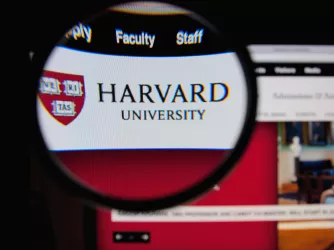Table of Contents
Will Arizona State University Be Lucky Number 13?
Of the more than 400 colleges and universities in FIRE's Spotlight database, only 12 can claim to be green-light institutions, schools where FIRE is unaware of any policies that threaten students' free speech rights. These colleges and universities, miraculously afloat in a sea of red and yellow lights, deserve special mention. They are the University of Nebraska - Lincoln, Dartmouth College, Cleveland State University, Bucks County Community College, Shippensburg University of Pennsylvania, Carnegie Mellon University, University of Pennsylvania, Black Hills State University, University of South Dakota, University of Tennessee - Knoxville, University of Utah, and The College of William and Mary.
Will Arizona State University (ASU) become the 13th green-light university in our database? We at FIRE, and Ross Kenyon, a CFN member and student at ASU, believe that it can. Last week, Samantha Harris wrote a letter to ASU President Michael M. Crow urging him to revise his school's lone remaining speech code and propel ASU from a yellow-light school to a green-light one. Overall, ASU's policies are supportive of free speech, but of concern to FIRE is one of the provisions of ASU's "Advertising and Posting" policy:
All advertising must avoid the promotion of excessive use of alcohol and must make reasonable effort to avoid demeaning, sexual or discriminatory portrayal of individuals or groups.
Well-intentioned as this policy may be, it prohibits a good deal of constitutionally protected speech at a public university.
A simple example demonstrates why this policy has a chilling effect on free speech. Let's say that a campus group wanted to bring Christina Hoff Sommers, a renowned critic of "establishment feminists," to ASU and posted advertisements for the event. These advertisements could be prohibited by the Advertising and Posting policy if they included controversial topics Sommers would likely address—including accusing battered women's advocates of exaggerating or misstating statistics on violence against women—that some people consider "demeaning" to particular individuals or groups. As Samantha said in FIRE's letter, "This vague prohibition could cover virtually any speech that paints another person or group in a negative or inferior light."
Ross Kenyon, in his Letter to the Editor for ASU's newspaper, The State Press, demonstrates his understanding of the dangers posed by this policy:
The prohibition of "demeaning...or discriminatory portrayal of individuals or groups," in particular, is vague enough that it could be wielded subjectively against politically unpopular opinions. As a result, it has a chilling effect on what should be a community based around the free exchange of ideas.
To our knowledge, this policy has never been explicitly used to punish anyone for politically unpopular opinions. However, this does not mean that it can't one day be wielded in such a way, nor does it mean that it hasn't discouraged the publication of advertisements out of fear of punishment. This unseen censorship is perhaps most worrisome because one will never know exactly how much speech has been and will be self-censored because of the policy.
ASU has nothing to fear from unbridled free speech because, as Ross puts it, "If our ideas are valid, they will survive their critics. If not, we will be that much closer to the truth." So, will Arizona State University be lucky number 13? Ultimately, it's up to them, but we at FIRE echo Ross's sentiment when he says, "Please, ASU Administrators, make us proud."
Recent Articles
FIRE’s award-winning Newsdesk covers the free speech news you need to stay informed.

Revoking Harvard’s tax-exempt status will threaten all nonprofits

Grandpa’s advice for the new wave of American censors

FIRE POLL: Only 1/4 of Americans support deporting foreigners for pro-Palestinian views
